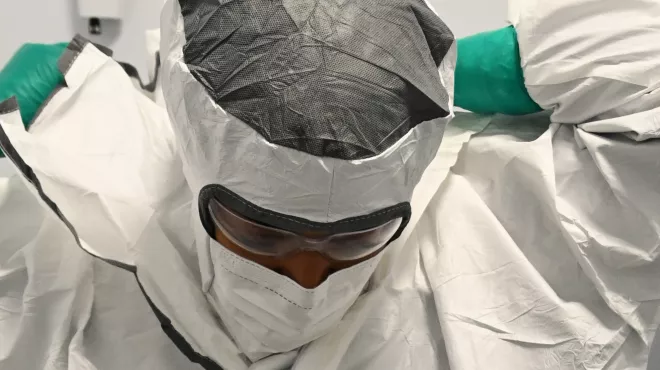You know those shaky smartphone videos? Imagine a disease that makes you see everything like that. Congenital nystagmus causes involuntary eye movements that make it difficult to steadily view objects. In extreme cases, patients are rendered legally blind. Little is known about the debilitating condition, but a team of scientists recently uncovered major clues about its origins.
Researchers previously suspected that a gene called FRMD7 was involved. After all, seventy percent of nystagmus patients have mutations in FRMD7, which also happens to be primarily expressed in the retina. But no one knew its precise role in nystagmus.
Enter Botond Roska, a neurobiologist and principal investigator at the Novartis-affiliated Friedrich Miescher Institute for Biomedical Research. His group discovered that FRMD7 mutations wreak havoc by sabotaging exquisite retinal cells called starbursts (above). Specifically, the mutations interfere with the cells’ ability to decode sideways movement. This finding, published in Neuron, provides critical insight for understanding and potentially treating nystagmus.
“Nystagmus is a very common disease—affecting 1 in 1,500 people—but it’s still poorly understood,” says Roska. “We’ve now shown that FRMD7 mutations keep starburst cells from doing their jobs.”
Although there was a clear correlation between mutated FRMD7 and nystagmus, Roska’s group first needed to confirm that the mutation did, in fact, cause nystagmus-like symptoms. To do this, they created genetically-modified mice that lacked functional FRMD7. Surprisingly, these mice didn’t display involuntary eye movements. They had, however, lost the reflex to track horizontal movement, another defining symptom of nystagmus.
Next, Roska’s group identified exactly which cells were affected by the mutation by profiling FRMD7 gene expression in the retina. Across all cell types, they found that only one was expressing FRMD7: starburst cells.
It’s easy to see how the starburst cell got its name. Many arms radiate from a central body. And these projections play a critical function, connecting with other cells in a neural circuit that processes vision. Starburst cells are known to be essential for deciphering and transmitting information about movement in all directions. Given this role, it wasn’t surprising for starburst cells to be implicated in nystagmus. But, there was something peculiar about the starburst cells in the genetically-modified mice.
“The starburst cells looked perfectly healthy,” says Roska. “There was no degeneration or failure to connect with neighboring neurons or any other indication that there was something wrong.”
The researchers had to look at the electrical signals between starbursts and their neighboring motion-detector cells to pinpoint the problem: starbursts could no longer tell left and right motion-detector cells apart. This meant that the mice lacked the reflex to track motion and the ability to distinguish whether an object moved left or right.
“Starburst cells are a hub for all types of motion-detecting cells, and they learn to distinguish between all of the different types during early development,” says Roska. “These sick starbursts hadn’t learned to distinguish between the left and right motion detectors, so the framework to compute sideways motion was missing.”
How well these results translate into humans remains to be explored, but the group confirmed a similar link between FRMD7 and starburst cells in primates, suggesting that the visual systems may be comparable. While Roska’s next goal is to further explore FRMD7’s exact role, these results provide a valuable starting point for future nystagmus therapies, as well as the first evidence that a disease can be caused by faulty computation in the brain.
Learn more about Roska’s research in this press release from the Friedrich Miescher Institute for Biomedical Research.
Main image: This starburst cell (in green) looks healthy, but its faulty cellular contacts underlie the debilitating retinal disease nystagmus. Image by Botond Roska/FMI
A cellular computing error wreaks havoc on vision.



